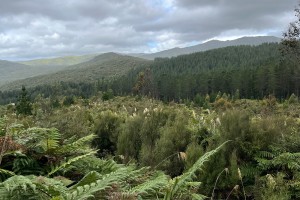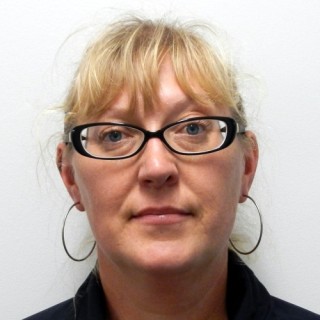Noho tahanga a Papatūānuku kia whakakorowai i ai ia
Papatūānuku (the Earth Mother) lays bare; we must recloak her
Keita Ngata (Ngāti Porou)
Senior researcher Dr Suzanne Lambie leads He Ngahere, He Korowai, a project focused on identifying resilient land uses on highly erosion-prone whenua Māori (Māori land). Suzanne has identified transition pathways for converting highly impacted erosion- prone whenua Māori areas from exotic rotational pine forestry operations to natural regeneration of diverse native permanent forest.

Post-pine harvest natural regeneration in the foreground, mature Pinus radiata to be harvested in the background still to be harvested, near Shannon, New Zealand.
“Land use change from pasture and rotational forest production to native permanent forest on highly erosion- prone land will decrease the impacts of future storm events,” says Suzanne. “But for this to mitigate climate change, native forests need to be established in the very near future.”
Suzanne says the project is focused on creating resilient landscapes for future generations.
“He Ngahere, He Korowai seeks to understand the barriers and solutions to changing to more resilient land uses on highly erosion-prone whenua Māori.
As part of this we are investigating how much carbon is stored in naturally regenerating forests, after the pine
has been harvested, to facilitate land resilience for future generations.”
The Natural Regeneration Transition Pathway provides landowners with the tools to identify and manage the highly erodible land of exotic pine forestry that could be converted to natural regeneration, as well as identify support mechanisms for funding to undertake the transitions. The project has developed a natural regeneration plan that outlines the stages of a 3-year site plan.


